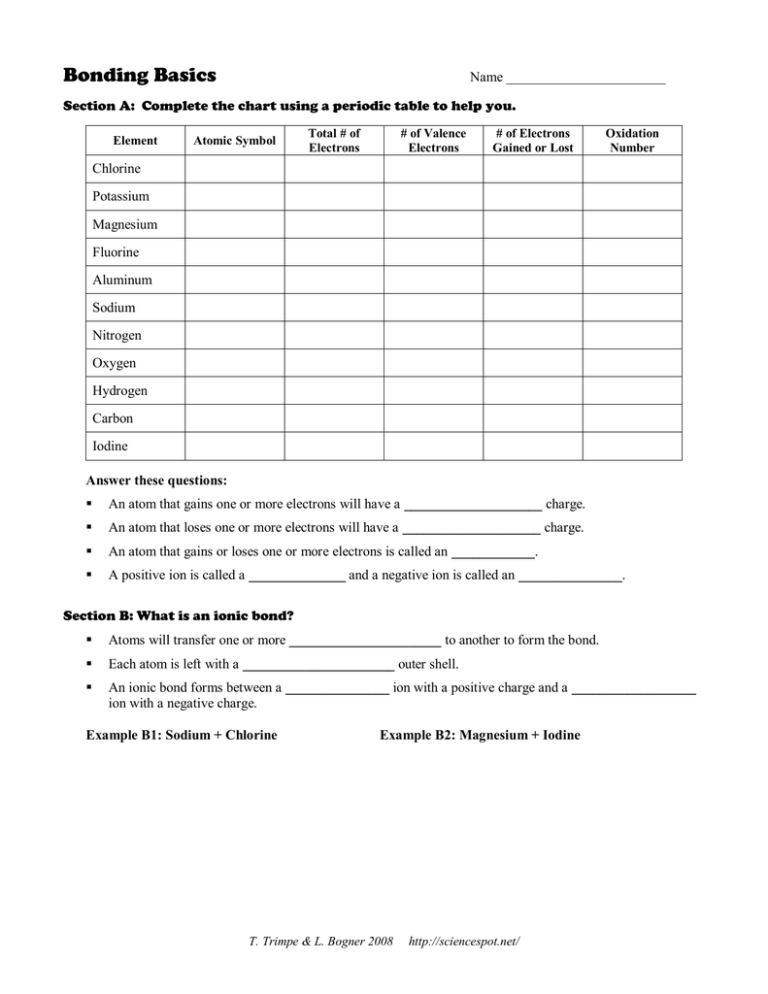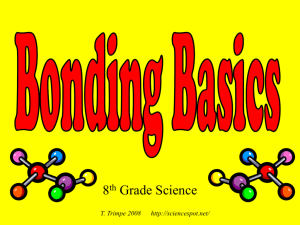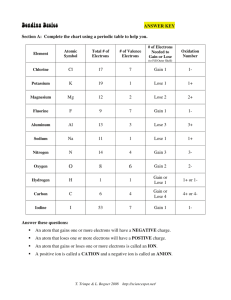Bonding Basics Name _______________________
advertisement

Bonding Basics Name _______________________ Section A: Complete the chart using a periodic table to help you. Element Atomic Symbol Total # of Electrons # of Valence Electrons # of Electrons Gained or Lost Oxidation Number Chlorine Potassium Magnesium Fluorine Aluminum Sodium Nitrogen Oxygen Hydrogen Carbon Iodine Answer these questions: An atom that gains one or more electrons will have a ____________________ charge. An atom that loses one or more electrons will have a ____________________ charge. An atom that gains or loses one or more electrons is called an ____________. A positive ion is called a ______________ and a negative ion is called an _______________. Section B: What is an ionic bond? Atoms will transfer one or more ______________________ to another to form the bond. Each atom is left with a ______________________ outer shell. An ionic bond forms between a _______________ ion with a positive charge and a __________________ ion with a negative charge. Example B1: Sodium + Chlorine Example B2: Magnesium + Iodine T. Trimpe & L. Bogner 2008 http://sciencespot.net/ Example B3: Potassium + Iodine Example B4: Sodium + Oxygen Example B5: Calcium + Chlorine Example B6: Aluminum + Chlorine Section C: What is a covalent bond? Atoms ______________________ one or more electrons with each other to form the bond. Each atom is left with a ______________________ outer shell. A covalent bond forms between two ______________________. Example C1: Hydrogen + Hydrogen Example C2: 2 Hydrogen + Oxygen Example C3: Chlorine + Chlorine Example C4: Oxygen + Oxygen Example C5: Carbon + 2 Oxygen Example C6: Carbon + 4 Hydrogen Challenge: What are some other ionic or covalent bonds that can be formed by the elements you see? Write the chemical formula for the compound and its name on a separate piece of paper and attach to this page. T. Trimpe & L. Bogner 2008 http://sciencespot.net/





